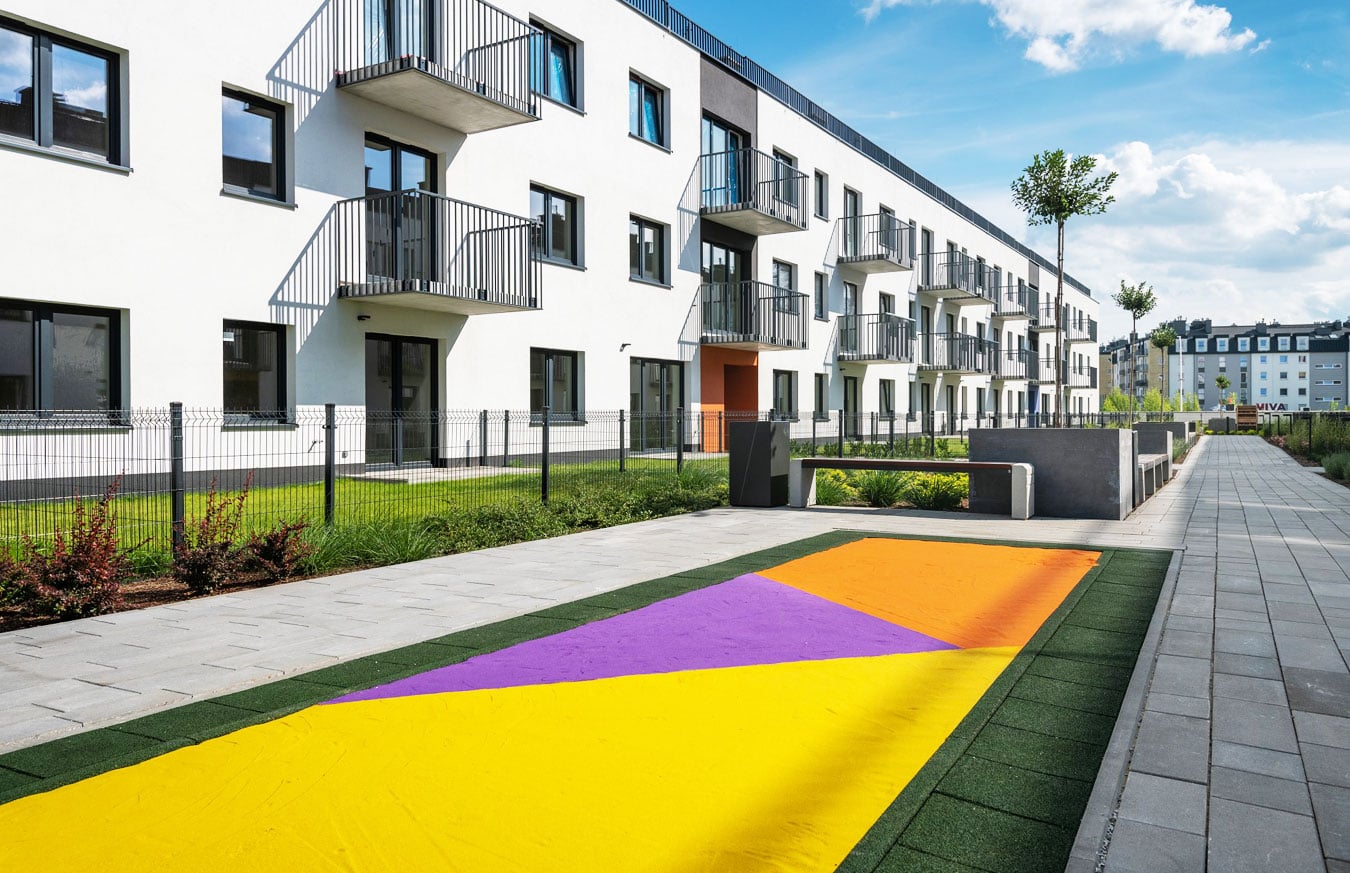What constitutes the area of an apartment? Check how to calculate the usable area.
The value of a residential property depends on many factors, primarily the usable area. This is a key parameter that potential buyers consider when deciding to purchase real estate from a developer. How can it be calculated correctly? We answer this question in our new blog article. We invite you to read it.

What is usable area?
As stated on the website of the Central Statistical Office, the usable area of an apartment is the sum of all rooms, including guest rooms, kitchens, pantries, hallways, bathrooms, corridors, and other spaces necessary to meet the residential needs of the household members. Interestingly, the definition indicates that living spaces such as balconies, terraces, laundries, drying rooms, or garages are not included in the measurements of the usable area of the apartment.
How to calculate the usable area of a residential unit?
In answering the question of how to calculate the usable area of an apartment, it should be noted that the answer is not straightforward. This is because, in Polish construction, two standards are used to calculate usable area – PN-70/B-02365 and PN-ISO 9836:2015-12.
The possibility of calculating the usable area using two methods is indicated by the Act of May 20, 2021, on the protection of the rights of buyers of residential premises or single-family houses. Although both standards allow for the calculation of usable area, they differ in the method of calculating this value.
To measure the usable area of an apartment according to PN-70/B-02365, the following measurement rules must be followed:
- The measurement is performed on walls that are not plastered, which in practice means that the surface is counted in its raw state according to the dimensions specified in the construction project.
- The measurement of the distance between the walls should be done at a height of 1 meter from the floor.
- If there are floor recesses in the residential unit with an area greater than 0.1 m², they should be included in the usable area of the apartment.
- The measurement should exclude door and window openings to the floor, as well as external surfaces such as balconies or terraces.
- For apartments in the attic, the area under the slants should be calculated according to the following rules:
- Slants with a height of up to 1.4 m from the floor are not included in the usable area.
- For slants with a height between 1.4 m and 2.2 m, 50% of the floor area is counted towards the total usable area.
- When slants exceed 2.2 m in height, the area under them is counted in full.
On the other hand, if we want to measure the usable area according to the standard PN-ISO 9836:2015-12, the following measurement principles should be applied:
- The calculation of usable area is performed in plastered apartments, which practically means that the actual area between the walls and the cladding is measured;
- measurements must be taken just above the floor;
- unused parts, such as protrusions or recesses, are not included in the measurements;
- door and window openings down to the floor should be excluded from the measurements;
- external areas such as balconies or terraces should be included in the measurements but reported separately in the documentation;
- for attic apartments, the area under the slopes should be calculated according to the following rules:
- areas below 1.9 meters in height are counted only as auxiliary space;
- areas above 1.9 meters are counted in full.
Both of the above methods for calculating usable area are correct, so it is solely up to the property owner to decide which method to use for calculations.
Usable Area vs. Developer Agreement
Information about the usable area of a new apartment is provided by the developer in the form of a post-execution geodetic measurement. However, the obligation to verify such area lies with the developer if the residential building consists of a significant number of residential units. In the case of single-family homes, there is no such requirement.
In practice, it sometimes happens that the usable area calculated after measurement differs from what was declared in the construction project. However, minor discrepancies are regulated by the Polish Association of Developers, which states that developer agreements may include a provision for an allowable deviation of 2% of the area without settlements between the parties. This approach is entirely justified, as differences in usable area most often arise from the thickness of plaster or the arrangement of building materials in the residential unit.
After reading our article, you now know what usable area is. This knowledge can help you easily plan your expenses related to finishing the purchased property. If you are still looking for your dream studio or apartment in a developer state in Wrocław, be sure to check out the offers of apartments in the "Viva Jagodno" estate on Kajdasza Street.
The mentioned estate reflects the investment assumptions of Ronson Development, which translates into residential units built to the highest standards, as well as providing close access to green areas, educational institutions, and services. It is, therefore, a great proposition for those who want to have everything they need within reach. Interested? New apartments in Wrocław are waiting for you!